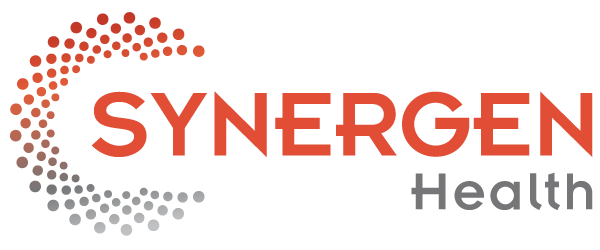An expert shares tips for revenue cycle leaders looking to streamline automation.
Key Takeaways
- Revenue cycle leaders are facing a lack of resources to manage workloads.
- The revenue cycle process is complex with many opportunities for breakdowns in efficiencies and revenue leakage.
- Deploying automation to broken workflows will not always produce an improved result.
Revenue cycle leaders have been tasked with helping to tighten the belt of hospitals as rising expenses continue to wreak havoc on hospitals and health systems across the country.
When looking to cut costs and streamline processes, many revenue cycle leaders are turning to automating mundane administrative tasks. For years studies have shown that a large amount of health expenditures go toward administrative costs. Ranging from billing and coding to insurance, these costs can negatively impact an organization’s bottom line.
From patient access to account resolution, automating routine processes gives providers the opportunity they need to cut down on administrative costs. To learn more, HealthLeaders touched base with Teri Schmidt, vice president of consulting and business development at SYNERGEN Health, to see how revenue cycle leaders can best leverage automation and cut these costs.
HealthLeaders: In which area of the revenue cycle are leaders seeing the most challenges, and how can these challenges be remedied with automation?
Teri Schmidt: One of the biggest challenges that revenue cycle leaders face is a lack of resources to manage workloads. We still face a nationwide workforce shortage in our industry, the same issue we have been plagued with since even before the COVID-19 outbreak. Whatever the reason for leaving may be, this exodus has put a massive strain on healthcare organizations revenue cycles. By automating workflows within the revenue cycle, we can streamline repetitive manual efforts that otherwise would have inundated the staff. By automating tasks such as claim review, claim follow up, and denial management, healthcare organizations enable staff to focus on more important, qualitative tasks.
The other most impactful challenge revenue cycle leaders face today is an increase in aged receivables. With greater financial responsibility being placed on the patient, healthcare organizations are seeing the average number of days it takes to collect payments due increase. Automated solutions help implement a patient-centric outreach strategy to assist patients in making informed cost decisions pre-visit and simplify post-care billing processes. This reduces the chances of surprise billing as well as an increase in aged receivables.
HealthLeaders: How can a streamlined revenue cycle strategy improve work efficiency for an organization?
Schmidt: We’re seeing more and more health organizations exploring and adopting automation solutions to drive their revenue cycle management transformation. These innovations can help them improve the efficiency and effectiveness of their operations by combining the power of machine learning and robotic process automation. Ultimately, by digitizing and automating their most repetitive end-to-end processes and functions, organizations are more empowered to drive value to the bottom-line while scaling resources to focus on complex, value-added activities. Automation powered by artificial intelligence and machine learning can even predict, prevent, and detect denials before the claims are submitted to the payer.
HealthLeaders: How can an automated revenue cycle help providers cut down on administrative costs?
Schmidt: Healthcare organizations can reduce their costs by investing in the right technology. From billing inefficiencies and payer-provider alignment to an increasing demand for resources, and inefficient manual workflows, automated revenue cycle tools can help address the plethora of issues that add to the cost to collect.
For example, when implementing robotic process automation into the appeals process, providers could have an increase in revenue and minimized administrative burden. Time consuming tasks preparing for the appeal and providing supporting documentation can be completed quickly with an increased level of accuracy by an RPA bot.
HealthLeaders: Why has automation been essential to organizations’ revenue cycles and how has it helped drive proper reimbursement?
Schmidt: Timely payments are the lifeblood to keeping your practice running. The revenue cycle process is complex with many opportunities for breakdowns in efficiencies and revenue leakage across the life cycle of a claim. By managing revenue cycle processes through automated solutions, healthcare organizations can improve results across the back end while decreasing labor-intensive tasks.
For example, by implementing automated insurance eligibility checks, patients understand their financial liability before receiving care and work with the provider to set up financial plans. This promotes financial transparency and streamlines the reimbursement for the provider.
HealthLeaders: With the current financial state, what can revenue cycle leaders expect in the coming year?
Schmidt: We have witnessed some of the toughest years the American health system has ever faced, but we still aren’t out of the shadow of the pandemic. Healthcare organizations have still not returned to pre-pandemic levels, and the coming year will likely feature trying economic battles as we approach a potential recession. While healthcare systems have witnessed an increase in patient volume, most likely due to elective procedures and COVID-19 surges, margin fluctuations denote a lack of stability.
Revenue cycle leaders can also expect a continued rise in expenses and administrative costs paired with a decline in staffing numbers to force health systems to find new alternatives. For example, introducing new hybrid staffing models could be a potential solution.
HealthLeaders: What tips do you have for revenue cycle leaders who are unsure if they should implement new technology or solutions?
Schmidt: To them, I have to say that transitioning and adopting any new technologies will always be daunting. It also goes without saying that choosing the right partner to streamline revenue cycle management is not easy, and any healthcare organization doing so should properly vet any potential candidate. The biggest tip I have is always to ask questions and always consider your team. From revenue cycle expertise to ease of integration, finding the right revenue cycle partner requires you asking the right questions about what’s best for your organization.
Deploying automation to broken workflows will not always produce an improved result. Some workflows just need re-engineered processes. It’s important to find an experienced revenue cycle partner that can identify where automation can truly drive an improved result. Some questions to keep in mind:
- Do I know where the breakdowns are currently across revenue cycle?
- What are the most time consuming tasks?
- Where are the greatest backlogs?
- Where do I have staff shortages?
“The biggest tip I have is always to ask questions and always consider your team. From revenue cycle expertise to ease of integration, finding the right revenue cycle partner requires you asking the right questions about what’s best for your organization.”
Amanda Norris is the Associate Content Manager of Finance, Payer, Revenue Cycle, and Strategy for HealthLeaders.

